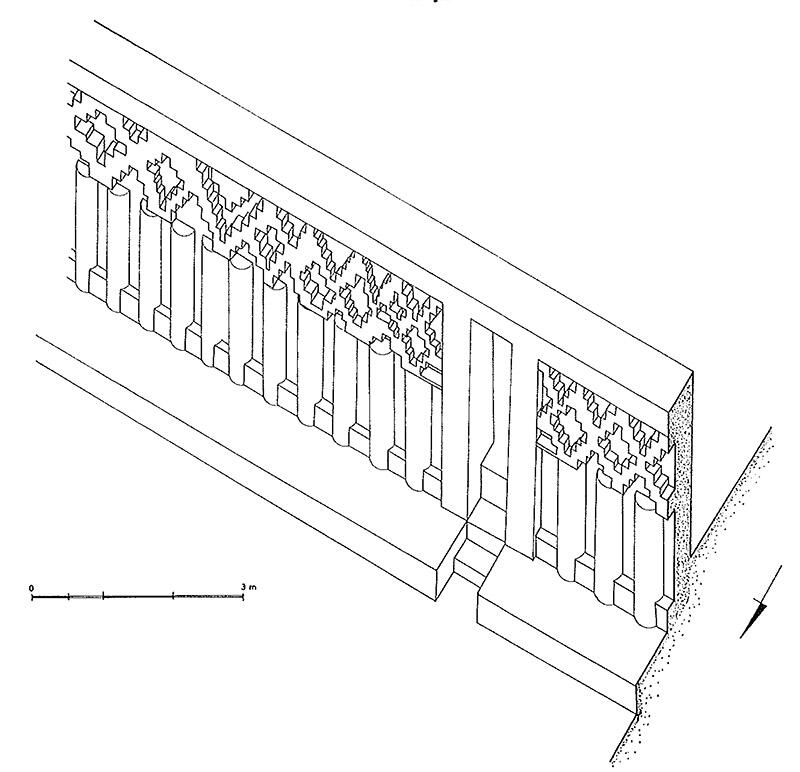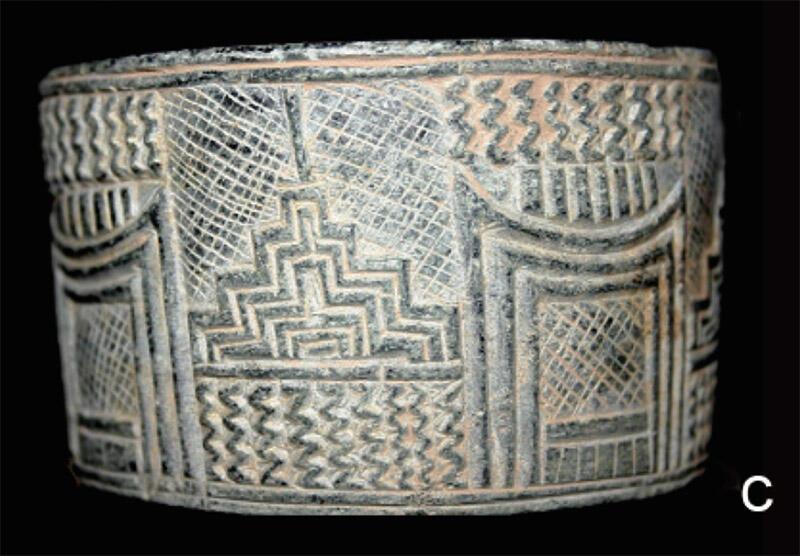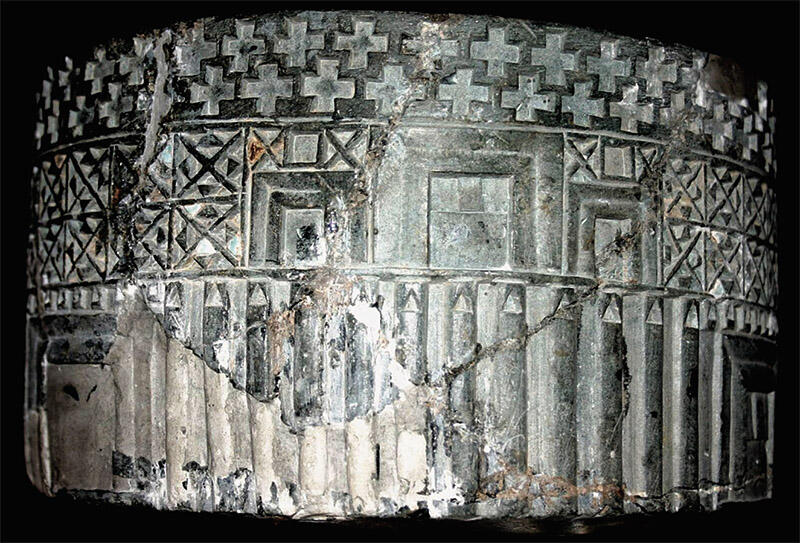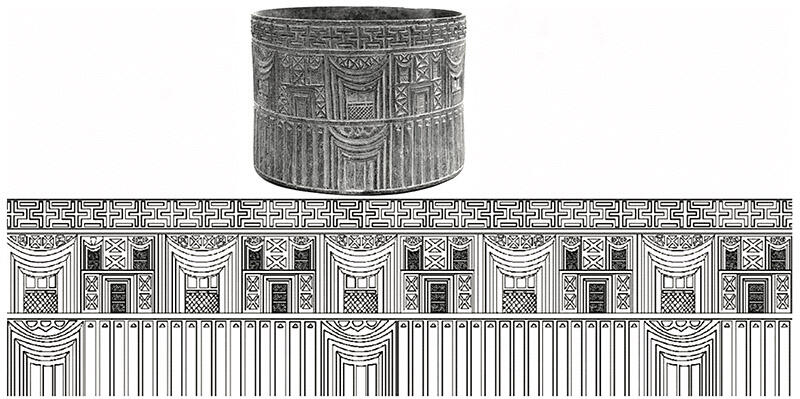"Two massive mud brick stepped buildings of the mid 3rd millennium BC were actually excavated, one at Tureng Tepe in the Gorgan plain (north-eastern Iran, Deshayes 1997) and a better preserved one at Mundigak in the Kandahar province of Afghanistan (Casal 1961; Dumarçay 1984)," writes Massimo Vidale in the superb article Protohistory of the vara. Exploring the Proto-Indo-Iranian Background of an Early Mytheme of the Iranian Plateau. "Both were badly eroded. The terraces of Tureng Tepe were probably embellished by semi-pillars, and in the main level at Mundigak (Image 1) rows of semi-columns painted red were crowned with an irregular frieze of stepped mudbricks creating chains of crosses or lozenges. Quite similar patterns (crosses or stepped triangles) feature, on the chlorite vessels, aside rows of possible semi- columns and hut designs (compare Images 2, 3 and 4 with Image 1; other illustrations in Hakemi 1990). That both the stone pots and the massive stepped building so far excavated took inspiration from similar architectural templates seems plausible" (pp. 9-10).
Images
1. Graphic reconstruction of the façade of the stepped building of Mundigak (Kandahar, Afghanistan), very similar to the upper frieze of the chlorite vessels of 2 and 3. From Dumarçay 1984.
2. A cylindrical pot in chlorite decorated with the ‘hut’ motif at the Jiroft Museum. Photo M. Vidale.
3. An elaborated cylindrical vessel in chlorite with ‘hut’ designs combined with other geometrical motives, suggesting two and probably three superimposed storeys (or concentric ring-like sections). Graphic reconstruction by Sedijeh Piran; from Madjidzadeh 2003.
4. Another elaborated cylindrical vessel in chlorite with ‘hut’ and other geometrical motives arranged in two superimposed friezes, at the Jiroft Museum. Note the few surviving inlays in white shell and the geometrical pattern on the upper frieze, very similar to the façade of the stepped building of Mundigak. Photo M. Vidale.








